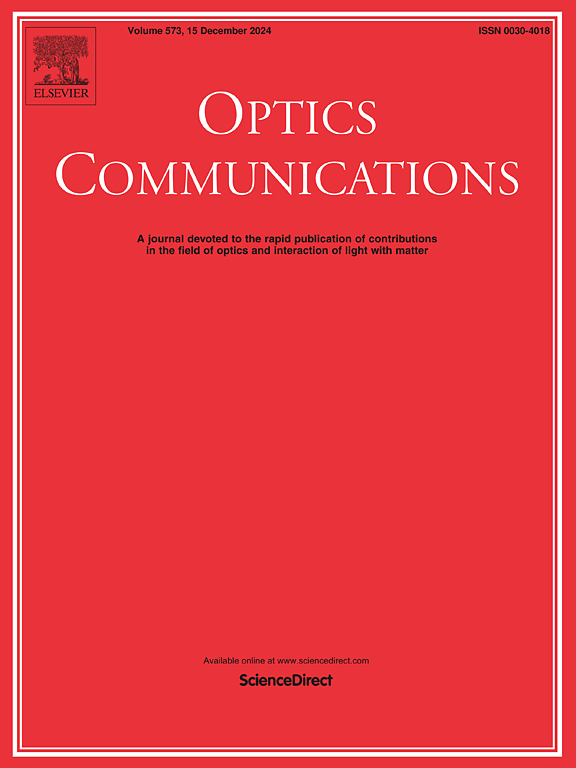Photonic physically unclonable functions using randomly positioned aluminum nanoholes
IF 2.2
3区 物理与天体物理
Q2 OPTICS
引用次数: 0
Abstract
With the advancement of the Internet of Things, the volume of information and communication has significantly increased, highlighting the critical need for enhanced data security. Physically unclonable functions (PUFs), which generate encryption keys through nondeterministic and replication-resistant methods, have been proposed as a solution. Among the various types of PUFs, optical-based PUFs are gaining attention owing to their ability to leverage light for rapid measurements and their superior resistance and complexity to replication compared to other methods. In this study, we proposed a photonic PUF based on an aluminum film structure with randomly positioned nanoholes on a substrate. Light transmission through this structure resulted in scattering owing to localized and propagating surface plasmon resonances. The resulting image was digitized to generate an encryption key. Our tests involved adjusting the filling factor (FF) and pixel size, yielding a high randomness of 49.87% and a high bit density of 1.6 × 107 bits/cm2. The independent bits produced a total of 258 bits, closely matching the actual bit count of 256 bits. Furthermore, applying a Gaussian distribution to the hole sizes, assuming a more realistic scenario, yielded favorable results. This structure is cost-effective owing to the simplicity of its materials, production method, and design. Additionally, its compact size of 40 μm × 40 μm makes it ideal for miniaturization and integration into various applications.
利用随机定位的铝纳米孔实现光子物理不可克隆功能
随着物联网的发展,信息和通信量大幅增加,这凸显了加强数据安全的迫切需要。物理不可克隆函数(PUF)是一种通过非确定性和抗复制方法生成加密密钥的解决方案。在各种类型的 PUFs 中,基于光学的 PUFs 因其利用光进行快速测量的能力,以及与其他方法相比优越的抗复制性和复杂性而备受关注。在这项研究中,我们提出了一种基于铝膜结构的光子 PUF,该结构在基底上随机设置了纳米孔。由于局部和传播的表面等离子体共振,光线通过该结构时会产生散射。由此产生的图像经过数字化处理后可生成加密密钥。我们的测试包括调整填充因子(FF)和像素大小,结果产生了 49.87% 的高随机性和 1.6 × 107 比特/平方厘米的高比特密度。独立比特产生的总比特数为 258 比特,与实际比特数 256 比特非常接近。此外,假设在更现实的情况下对孔的大小采用高斯分布,也产生了良好的结果。由于材料、生产方法和设计简单,这种结构具有很高的成本效益。此外,其 40 μm × 40 μm 的紧凑尺寸使其非常适合微型化和集成到各种应用中。
本文章由计算机程序翻译,如有差异,请以英文原文为准。
求助全文
约1分钟内获得全文
求助全文
来源期刊

Optics Communications
物理-光学
CiteScore
5.10
自引率
8.30%
发文量
681
审稿时长
38 days
期刊介绍:
Optics Communications invites original and timely contributions containing new results in various fields of optics and photonics. The journal considers theoretical and experimental research in areas ranging from the fundamental properties of light to technological applications. Topics covered include classical and quantum optics, optical physics and light-matter interactions, lasers, imaging, guided-wave optics and optical information processing. Manuscripts should offer clear evidence of novelty and significance. Papers concentrating on mathematical and computational issues, with limited connection to optics, are not suitable for publication in the Journal. Similarly, small technical advances, or papers concerned only with engineering applications or issues of materials science fall outside the journal scope.
 求助内容:
求助内容: 应助结果提醒方式:
应助结果提醒方式:


